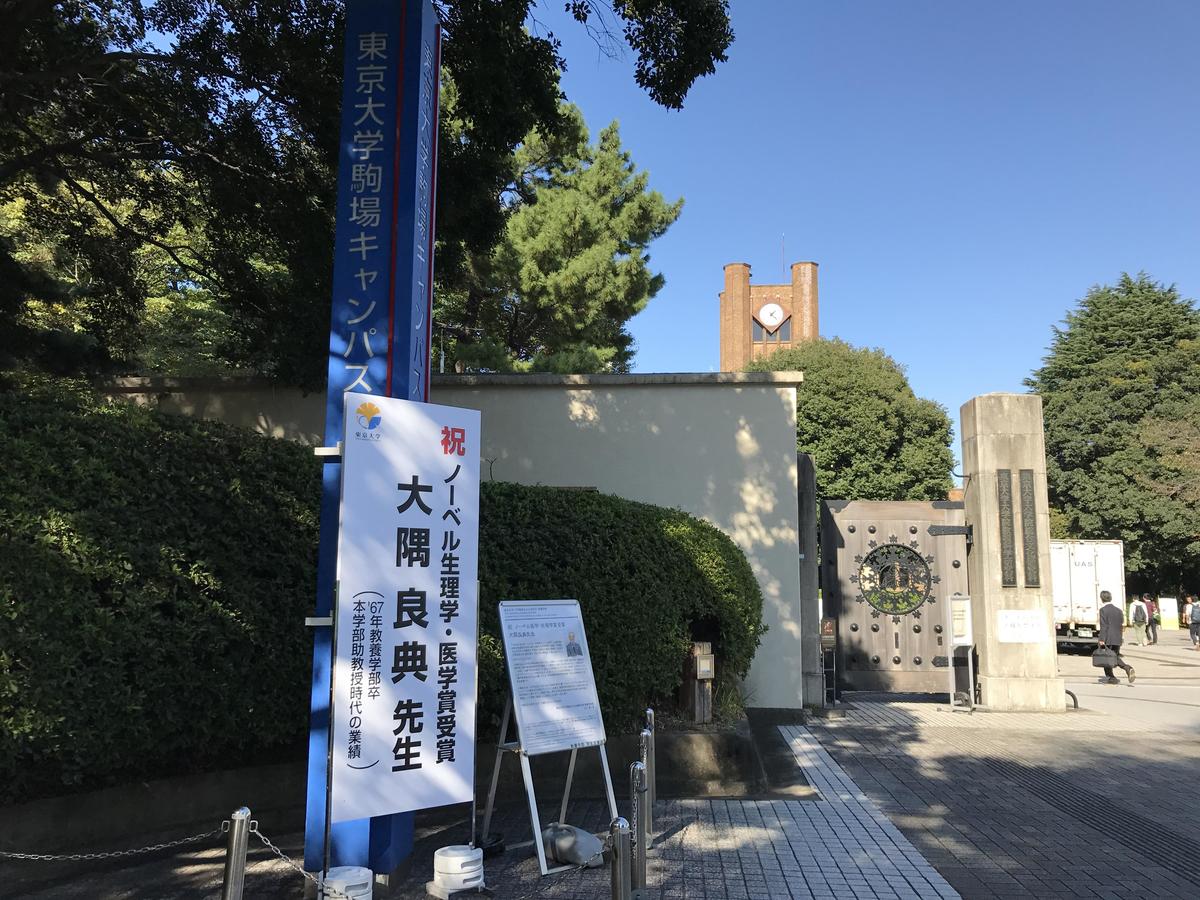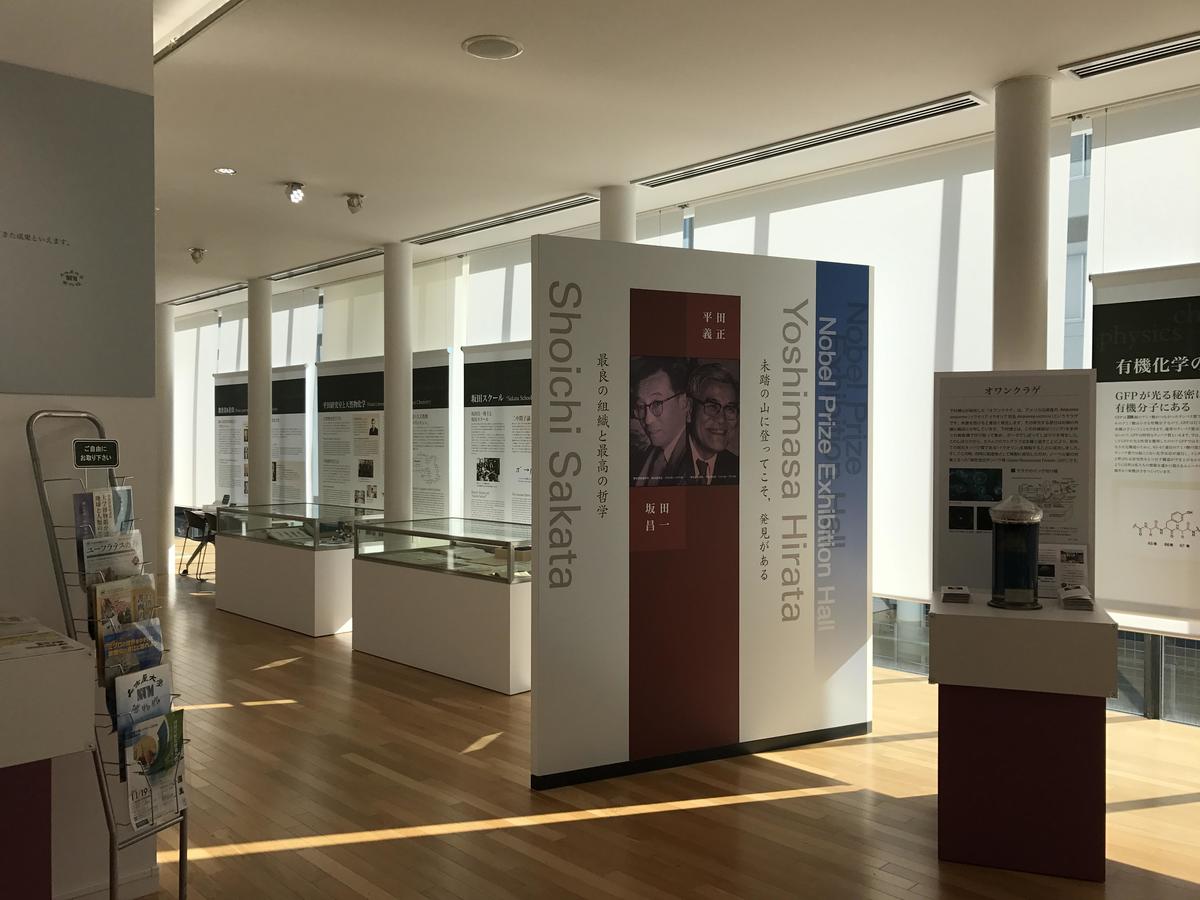February 6, 2017
The Nobel Prize and Universities
News came out late last January that Yoshinori Ohsumi, Honorary Professor at Tokyo Institute of Technology who won the Nobel Prize in Physiology or Medicine last year, donated his 100 million yen in prize money to Tokyo Tech and established a fund to support students and young researchers. The prize amount is large, considering how unusual awarding of the prize to a single individual has been in recent years. I imagine it comes as a huge encouragement to Tokyo Tech students. It seems to have been the wish of Alfred Nobel, who in his dying will awarded what was then 20 years' worth of income for a college professor, that worthy researchers be able to throw themselves into their work without financial concern. That the award money would go to foster the next generation of researchers, even as the laureate himself becomes far too busy to even think of research, is perhaps a way of granting that wish in different form.
Japan is not lacking in its supply of laureates. This is the third straight year a Nobel laureate has come from Japan, bringing the number of such laureates in the sciences to 16, including one U.S. citizen, since the year 2000. Six of those were from Nagoya University--the most of any Japanese university, of course. Before that, four of the five laureates in the half-century since Hideki Yukawa were from Kyoto University. This is why many Japanese think of Kyoto University when they hear the words Nobel Prize. Both the lineup and the uniform have changed. . . .
This is how I began countless articles, each with updated figures, back when I was a journalist. But the latest awards got me thinking: what does it mean when we say "from Nagoya University"?
Monday, October third, the day of Professor Ohsumi's Nobel announcement, was my first day of work at Meidai. I was nervous, but also wondered in the back of my mind who the laureates might be this year. For a science reporter, the Nobel announcement is a major event. You draft various articles on potential laureates based on their chances of winning, and make sure to confirm their location on the announcement day. For the strongest candidates especially, as in the case of Prof. Ohsumi last year, all reporters in the science department assume their respective positions, including standing by near the laureate's place of activity, each waiting for the moment of the announcement. I, too, had this experience. When I was a correspondent in the U.S., I was put on standby for a Japanese researcher living in Canada. On the east coast, the announcement is made at five in the morning. I remember parking my car near the researcher's house in the predawn darkness, watching and waiting for the call to come from Stockholm, as would be indicated, I expected, by the house lights turning on. When I was an editorial writer as well, barring extreme circumstances, we would always place an editorial on the topic in the next day's morning edition. My job was to prepare drafts and wait for the moment of the announcement. If a Japanese won the prize, I would quickly finish the manuscript, which replaced whatever editorial was scheduled. Other departments had their own adjustments to make, so we all had to stay on our toes. This time, having stepped away from journalism, I watched the Nobel announcement "from a height," to borrow the phrase of a junior science reporter. Still, I couldn't help but think we will have another laureate from Meidai--possibly because of Meidai's track record of producing laureates, but also the instinct I've cultivated from many years as a reporter.
A closer look revealed Prof. Ohsumi's solo win to be rather extraordinary. The news made major headlines in the next morning's papers. Shortly thereafter I received an email from a friend. "Supposedly Ohsumi's work started at the University of Tokyo and then continued at the National Institute for Basic Biology (NIBB) in Okazaki, Aichi Prefecture. Why isn't that made clearer in the newspaper reports?" You're asking me, the ex-reporter? I thought. Looking through the papers again, however, proved him right: it was not adequately mentioned. Compared to the generous coverage given to the delight expressed by the institute president and students at the Tokyo Tech press conference, UT and NIBB, although referenced, hung in the shadows. For many people, Prof. Ohsumi is "Prof. Ohsumi of Tokyo Tech."
It was 2009, when Prof. Ohsumi transferred to Tokyo Tech at the age of 64. Naturally, the achievements that led to his winning the Nobel Prize were far earlier. The key publications cited by the Nobel Committee are two from UT and two from NIBB. How Prof. Ohsumi grew as a researcher and how and in what research environment he made his discoveries are of critical importance here, yet it's UT and NIBB that hold the keys to those questions.
The profile announced in the Nobel Committee's press release states that he received his Ph.D. from UT and later established his research group there, but makes no reference to NIBB. Rather, it mentions that he "[spent] three years at Rockefeller University, New York, USA," revealing the viewpoint of the Nobel Committee and, behind it, the West. Naturally, we need not take the same perspective.
UT Professor Emeritus Hideo Mori, who was dean of UT's College of Arts and Sciences when Prof. Ohsumi first discovered autophagy, and later president of NIBB when Ohsumi transferred there, tells a background story to the research in a celebratory article he posted to the NIBB website soon after the Nobel announcement. Ohsumi was in the second class of a new program at the College of Arts and Sciences called the Sub-Department of Basic Science, which aimed to cultivate individuals with a broad knowledge of everything from biology to geoscience. After studying abroad in the U.S. and lecturing in the UT School of Science, he returned as Assistant Professor to the College of Arts and Sciences, where he observed the autophagy phenomenon for the first time under an optical microscope. It would be another four years before he published his discovery. Prof. Mori says Ohsumi became known since that time for not writing papers. When, as a concerned department chair, he asked Ohsumi about it, Ohsumi calmly replied not to worry. Mori suspects that Ohsumi preferred not to publish until he was convinced of his findings, which, Mori writes, is practically impossible in today's fixed-term system. At NIBB, to which Ohsumi later moved, he added zoologists to his research team and confirmed that autophagy is a phenomenon common among mammals, taking his research to new depths.
The College of Arts and Sciences at the Komaba Campus has liberal arts programs for first and second-year students as well as a specialist program. Mori and others affiliated with the school agree that it had a smaller research budget than the School of Science at the Hongo Campus, but also more freedom. Everyone in the biology department, from professors to assistants, was an independent researcher; they didn't follow the School of Science's pyramidal structure, with professors at the top. It was then that the 43-year-old Ohsumi came into possession of his own laboratory for the first time, though with only half the space of professors, no staff, and borrowed instruments. The research he began with his graduate-level partners would go on to open new frontiers.
When I visited the Komaba Campus, there was a banner at the front gate celebrating the laureate. It said: "College of Arts and Sciences graduate, achievements when he was assistant professor at the college." The graduate school building added: "Ph.D. from the Graduate School of Science, Department of the Correlative Study of Physics and Chemistry (Komaba)," revealing the sense of pride the Komaba Campus takes in having achieved so much on what was hardly an ample research budget. The words go beyond internal rivalries with the Hongo Campus; they speak to just how important a free research environment is.
Research brought to life in the free and independent environment of Komaba came to full bloom in the privileged research environment of NIBB. I heartily agree with Prof. Mori's assertion that we should look closely at both. Likewise, Mori resents the fact that Kyoto University Professor Shinya Yamanaka, who discovered iPS cells, is always linked to Kyoto University, with never any mention of his alma mater being Kobe University and his work being conducted at the Nara Institute of Science and Technology.
 Banner at the front gate of the UT College of Arts and Sciences celebrating Prof. Ohsumi's winning of the Nobel Prize
Banner at the front gate of the UT College of Arts and Sciences celebrating Prof. Ohsumi's winning of the Nobel Prize
After the initial announcement, another wave of Nobel news coverage occurs around the award ceremony on December 10, the anniversary of Alfred Nobel's death. Again, there were numerous articles telling Ohsumi's story as far back as UT and NIBB, but still the overall message seemed to equate Ohsumi with Tokyo Tech. Supposedly when Ohsumi retired from NIBB, some pushed to have him invited back to the Komaba campus, without success. Imagine if Ohsumi had been at Komaba at the time of the announcement. I think more attention would have been given to Komaba's unique research environment, prompting a larger discussion about what that environment entails.
Tokyo Tech is the alma mater of Hideki Shirakawa, who received the Nobel Prize in Chemistry in 2000, and also where he conducted his prize-winning research. Yet Shirakawa is known as "Professor Emeritus at the University of Tsukuba," his affiliation at the time of the announcement. Maybe this time Tokyo Tech has finally gained public recognition as a Nobel Prize-winning school.
My point in writing about this at such great length is not that the universities of Nobel laureates should be more properly recognized. Rather, the Nobel Prize should be treated as an opportunity to contemplate what innovative research requires. Our attention should be focused on how successful researchers develop, and what environmental conditions enable their research.
Ohsumi himself has repeatedly stressed the importance of the environment that supports science, which is what motivated him to establish a fund. We must not allow the Nobel Prize event to come and go like the excitement of a summer festival.
This brings us back to "from Nagoya University." Five of Meidai's six laureates are homegrown: they received their Ph.Ds. here. The only exception is Meidai's Distinguished Professor Ryoji Noyori, who got his Ph.D. at Kyoto University and became Associate Professor at Meidai at the age of 29. Since that time, Meidai was his arena of activity and where he conducted his Nobel-winning research. He is unquestionably a Meidai laureate.
Four of the laureates, Noyori included, come from the "Sakata School" and "Hirata School" of Meidai's School of Science. These words in large font are the first to greet you upon entering the Nobel Prize Exhibition Hall, built on the Meidai campus to commemorate the 2008 Nobel Prize in Physics and Nobel Prize in Chemistry. Needless to say, the Sakata School is the group headed by particle physicist Shoichi Sakata. Both Makoto Kobayashi and Toshihide Maskawa, who won the 2008 Nobel Prize in Physics, grew up in that school. Their social environment was one of free discourse, without hierarchy, where everyone including professors was called by the casual suffix "san." The only person Maskawa couldn't bring himself to call "san" was Prof. Sakata. That's the level of esteem he held in elementary particle circles.
The Hirata School was led by organic chemist Yoshimasa Hirata. Osamu Shimomura, who won the 2008 Nobel Prize in Chemistry, studied in Hirata's laboratory based on a chance meeting. The research he started there he developed further in the U.S., where he identified a light-emitting substance in jellyfish. Shimomura calls Hirata his "foremost teacher." It was also Hirata who invited Noyori as associate professor. Noyori recalls that whereas most professors would employ "people with a name," Hirata would invite "youth whose futures were still up in the air," and was also impressed that such an approach to organizing his team ever worked. Hirata would entrust an entire field of chemistry to the youth he had never met, saying only, "Do good organic chemistry for me." Noyori met those expectations brilliantly.
A number of other talented researchers have emerged from the same schools. It's impressive that there were even two of them, covering multiple disciplines. A new hall constructed in the School of Science was named the Sakata & Hirata Hall. It seems naming buildings after laureates is the thing to do, the way UT's School of Science named Koshiba Hall, after Emeritus Professor Masatoshi Koshiba, who received the 2002 Nobel Prize in Physics. The names seem to be saying to students, "Find a mentor."
 The two schools showcased at the Nagoya University Nobel Prize Exhibition Hall
The two schools showcased at the Nagoya University Nobel Prize Exhibition Hall
As a point of contrast, Isamu Akasaki, Distinguished Professor of Nagoya University who was awarded the 2014 Nobel Prize in Physics for developing blue light-emitting diodes, was offered a faculty position in the School of Engineering from his place in business. Seemingly rare at the time in Japan, the transferal from industry to university could perhaps be attributed to Meidai's youth. Akasaki, who had research assistant experience at Meidai, had been singled out to oversee their semiconductor research. His private-sector experience led to the conviction that materials must be tough, and to persevering with gallium nitride, which other researchers had abandoned. Meidai Professor Hiroshi Amano, who was awarded the Nobel jointly with Akasaki, commented once that he wanted to join Akasaki's laboratory in part because Akasaki's experience in industry had created a completely different atmosphere for doing research.
Both laureates are indisputably "from Nagoya University." It also goes without saying that their most important findings were made at Meidai. The problem is the future. Universities are in a tough place. That said, I would like them to remain an environment where young researchers can grow and achieve their full potential, with many exciting discoveries to come.

 Subscribe to RSS
Subscribe to RSS